Final year project
Supporting adult dyslexia by optimising dyslexic strengths to aid reading, comprehension… [Read more]
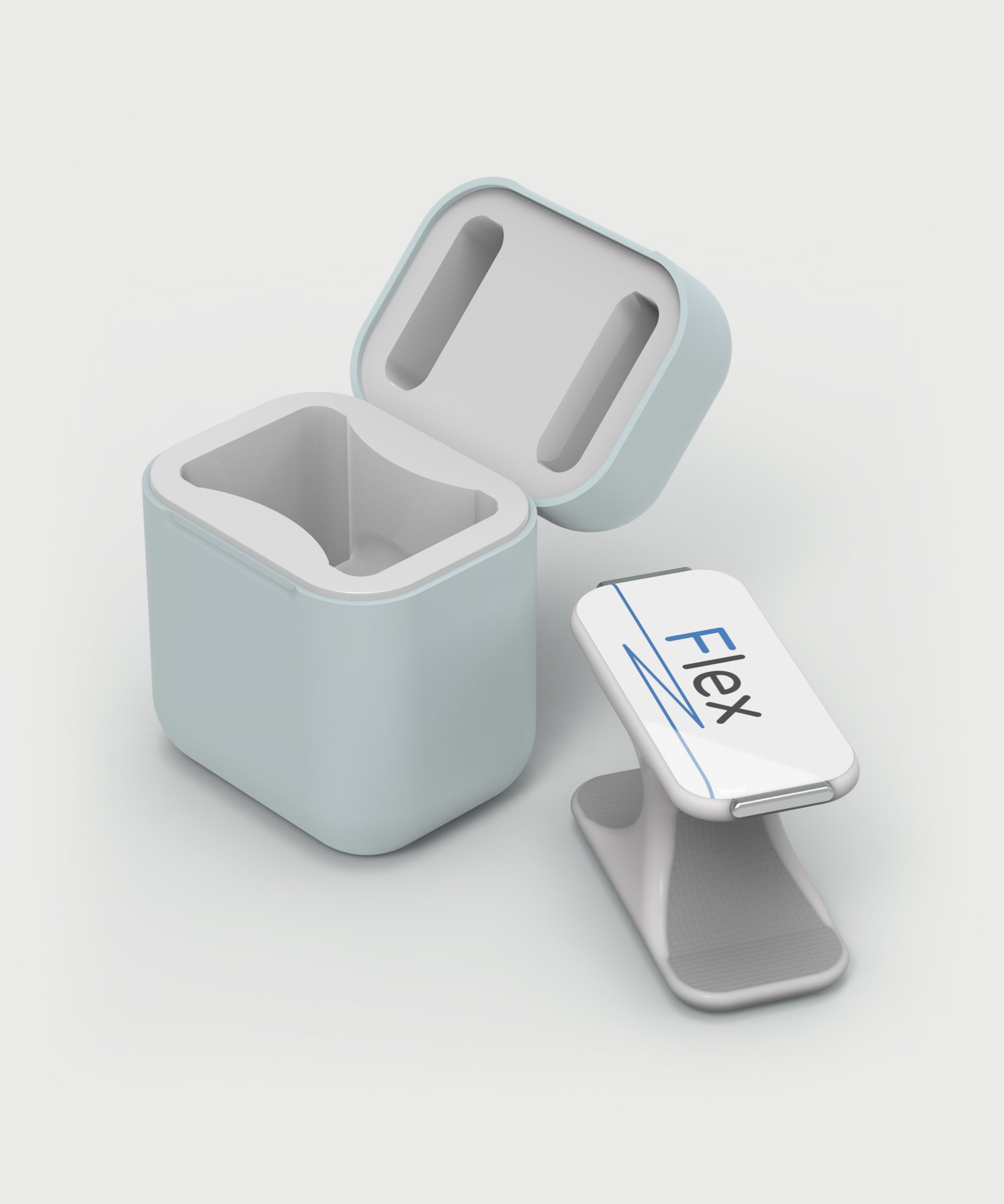
Flex
There is a widespread lack of understanding of the needs of the working dyslexic population. In extreme cases, the consequences of dyslexia mismanagement at work can lead to insomnia, chronic anxiety and panic attacks.
Flex is a wearable device for those who struggle with the reading and memory-related frustrations associated with adult dyslexia. Flex capitalises on common dyslexic strengths of visual and holistic thinking by breaking down the printed text into a digestible format personalised to the user’s strengths. Ultimately, Flex empowers the user to view neurodiversity as an ally rather than an enemy.
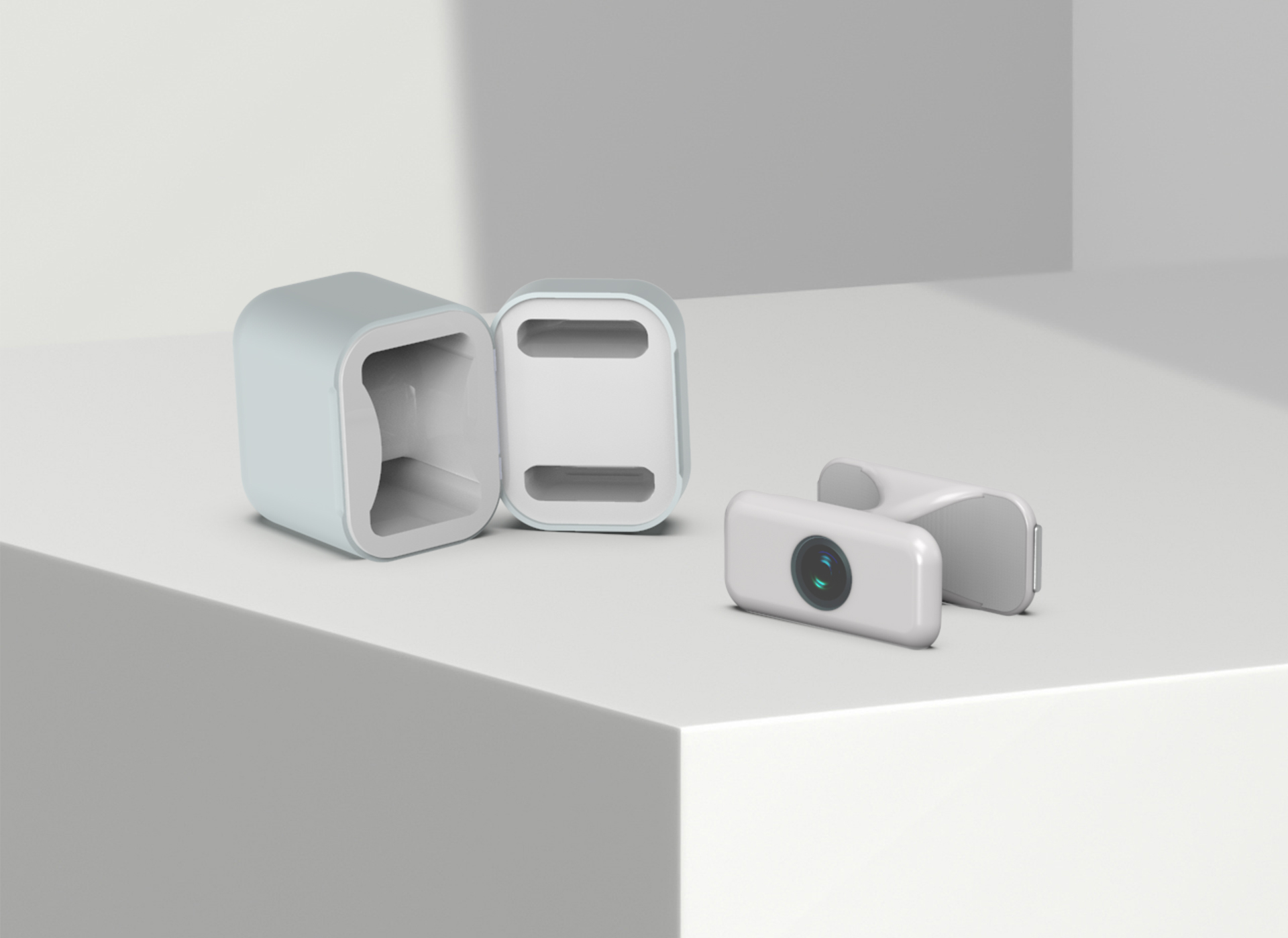

Flex - Portability
Flex can be easily transported in its compact charging case for use at work and at home. It is a lightweight device that allows the user to continue with tasks such as writing and typing while it is worn. As an inclusivity tool, the user is less likely to feel unprofessional using Flex in the workplace in comparison to using assistive software on a personal mobile device.


Flex - Technology
The camera allows the user to quickly scan a document to either play now (in the user’s preferred comprehension format) or save it to review later. Optical character recognition software is used to convert images of printed text into a format which can then be manipulated to the user's preferences. Saved documents are uploaded to the user’s Flex mobile app.
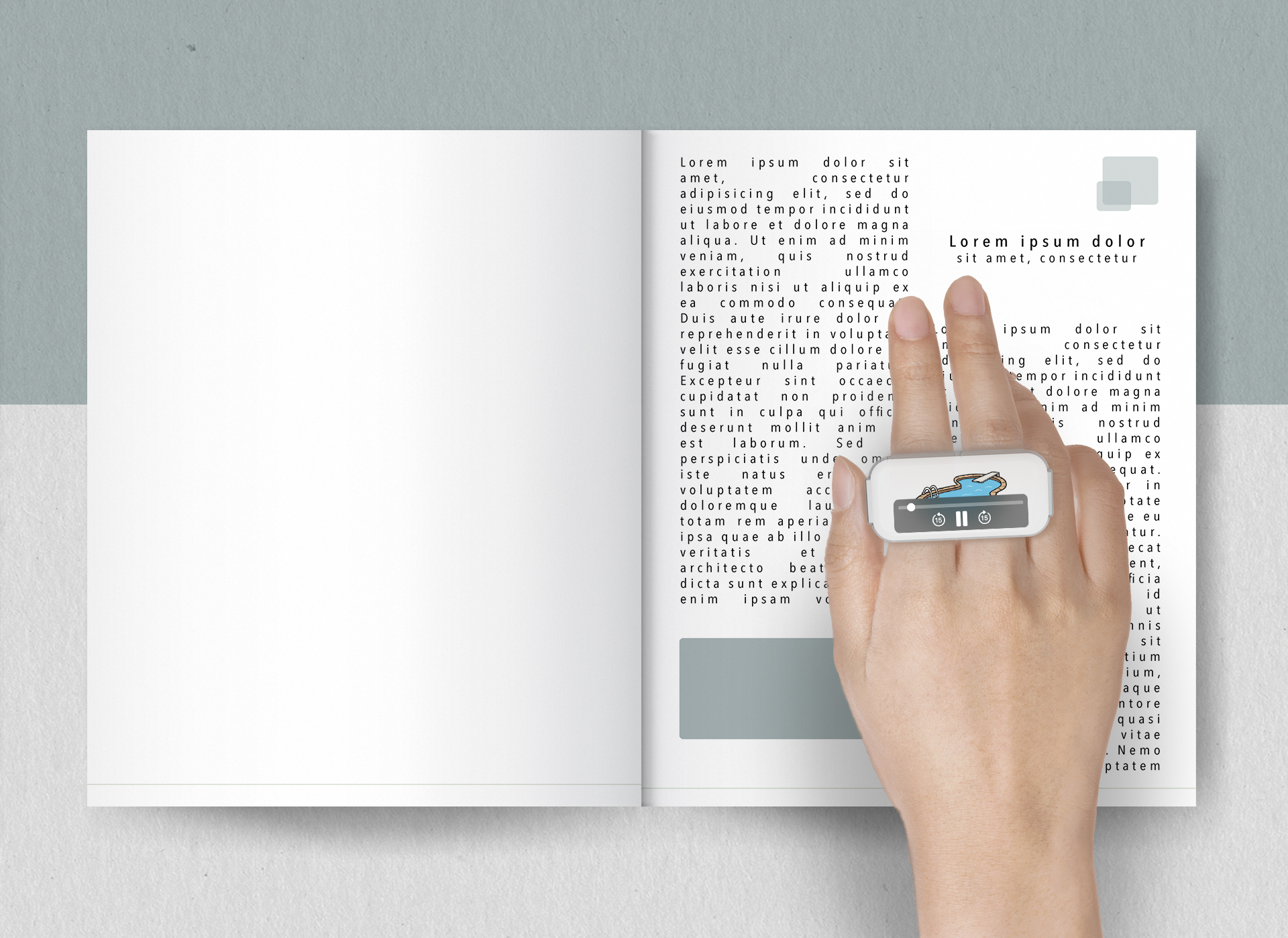

Flex - Usability
The user can wear the device between their fingers while they watch a playback of the scanned text with their preferred comprehension settings. They can personalise a combination of many comprehension settings such as imagery, words, typeface, background colour, speech, accent, speed and number of words per frame.


Flex - Companion App
The mobile app can be used to review previously saved scans and input vocabulary, acronyms or phrases into a personal jargon dictionary. The user can add images or record audio notes to assist with comprehension of the dictionary entries. ‘Jargon of the day’ notifications are sent to aid with retention.
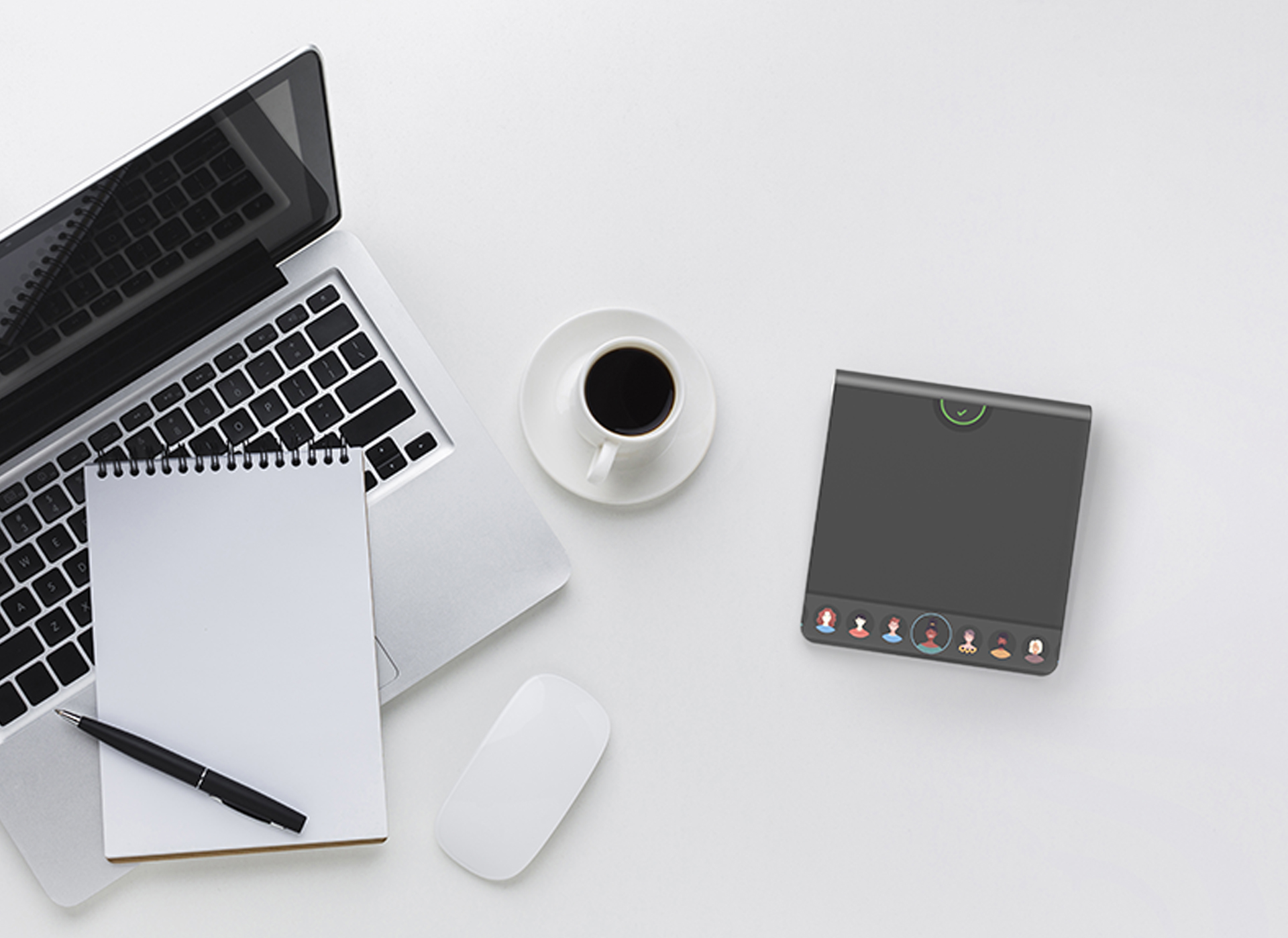

knock.
A communicational platform that leverages the interaction of knocking to improve relationships between colleagues whilst remote working. By fusing a physical in-office interaction within a virtual environment a more casual and human way to reach out to a colleague for help is created.
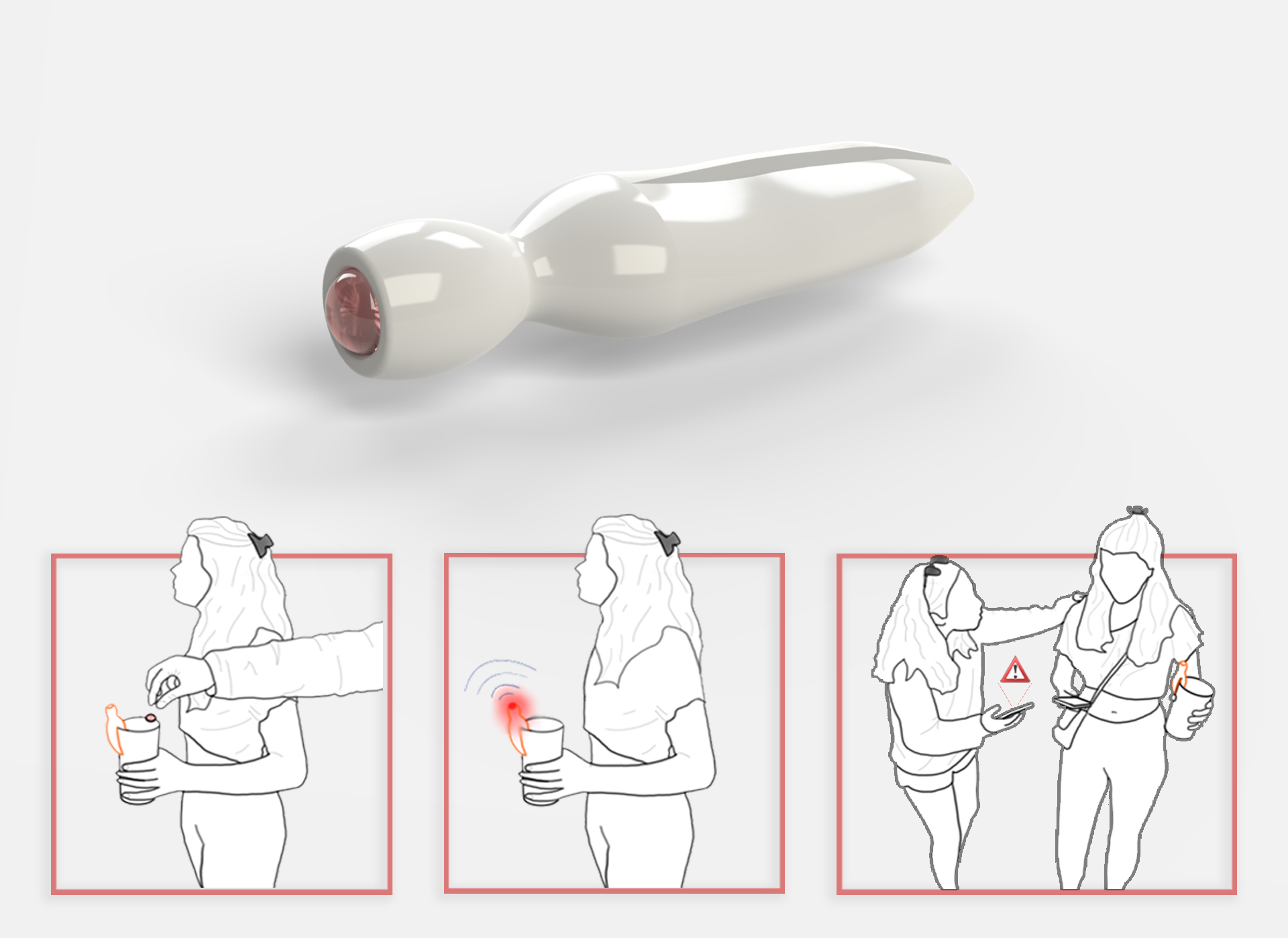

AntiSpike
An loT cup attachment that detects when a drink has been spiked and alerts the user through the AntiSpike companion app and through emergency SMS messages. With chemical sensors to detect the presence of ‘date-rape’ drugs such as GHB and ketamine.
Hannah Legg
User-centricity is at the core of my design approach. I am interested in reframing problems to understand genuine user needs and building empathy to ensure the final solution is more than just beautiful.
I am an inquisitive person who is not afraid to ask questions and tackle difficult topics. Throughout my time at Loughborough, some of my projects have looked into drinks spiking, the mental load and adult dyslexia. Although these are topics that I can empathise with to some extent, it is through research methods, experience prototyping and user feedback that led to user-centred outcomes.
Over my placement year as a User Experience Designer at Zebra Technologies, I was able to dive into UX design. Working in a global multi-disciplinary team I enjoyed taking on a range of projects, from improving the customer experience of some of Zebra's existing apps to designing the behaviour of an LED ring for a new printer.
Final year project
Supporting adult dyslexia by optimising dyslexic strengths to aid reading, comprehension and retention.
Awards
'21 Listed inventor on Zebra Technologies patent 'Indicator Assembly for Media Processing Devices'
'21 Diploma in Professional Studies
'20 Runner-up Best Prototype @ UXathon 2020 (Deloitte Digital)
Work Experience
June 2019 - August 2020
User Experience Design Intern, Zebra Technologies